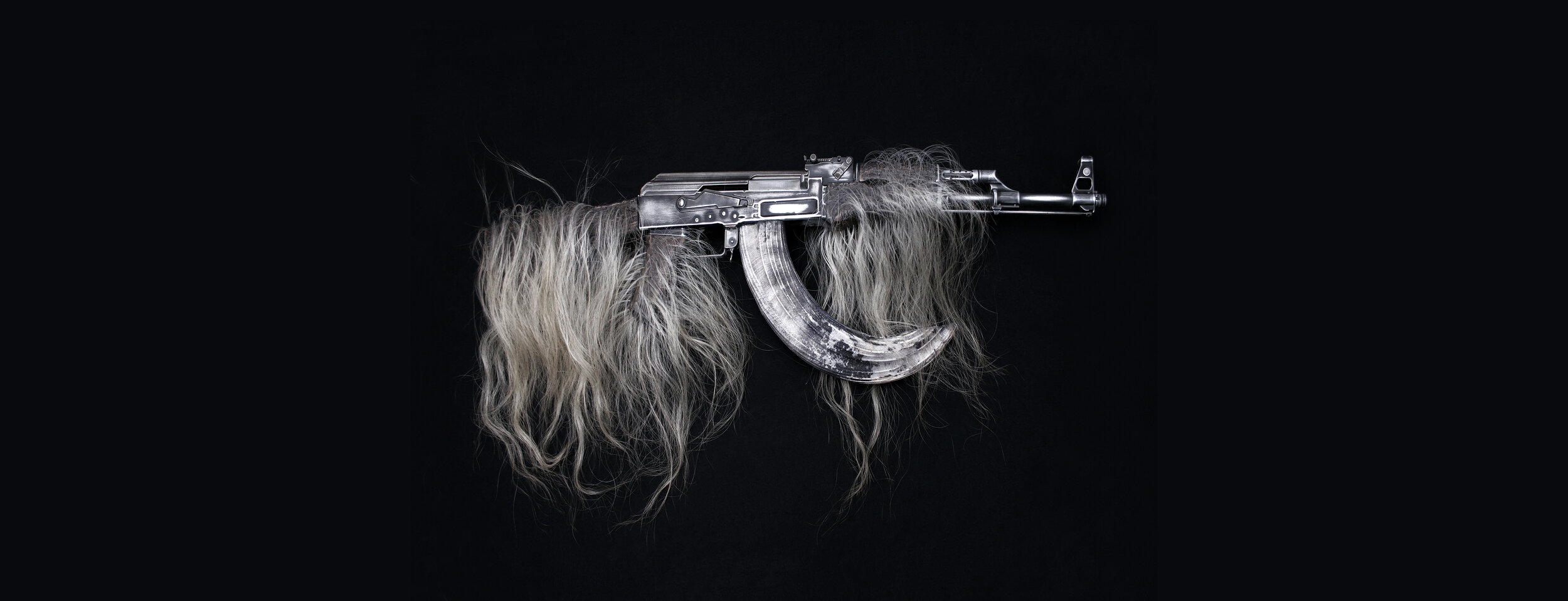
The AK-47 stands for Avtomat Kalashnikova model 1947, designed by Mikhail Kalashnikov while wounded in hospital during World War II. Capable of firing up to 600 rounds a minute, this incredibly reliable weapon has been produced in greater numbers than any other 20th Century assault rifle, with an estimated 70-100 million units currently being used around the world. The average cost of an AK-47 in many African countries is around $30, and it is in this context that it has had it's most insidious and destructive presence. It is difficult not to find rural peoples of central, northern and southern African regions not in possession of AK-47 rifles. As an object of fetish; form of currency; power symbol and instrument of both aggression and self-determination, the AK-47 has become synonymous with the African continent – to extent that one often forgets it was neither designed here, nor is it made anywhere on the African continent. The firearm, the ammunition consumable and all spare parts are 100% imported.
Without mechanised infantry, tank support or air power, the problem with regional conflicts, civil wars and criminal activities rife throughout Africa, is that these wars, skirmishes and killings continue for decades without resolve. This is the end-user scenario of the small arms trade, an industry that annually sells 8 million guns, adding to the estimated 650 million light arms already in global circulation. It is estimated that 60 per cent of small arms in the world are currently in civilian hands. Behind this deluge of munitions are the world's richest nations. From manufacturers, the guns are sold to governments and exporters, and onto to warlords and rebel armies - ultimately reaching the rural poor, who own these weapons simply because everyone else does.
The grotesque creatures produced by grafting prominent physical characteristics of African animals (antelope hair and the Hippopotamus canine) to the devastating legacy of the AK-47 intends to comment on the degree to which violence, corruption and civil destruction are such an intrinsically institutional pandemic on the African continent – to the extent that this brutal intruder has seemingly infected or interbred with the indigenous fauna.
Comrade series
Above:
Comrade II
AK-47, Hippopotamus canine tooth, animal hair, epoxy
1000 x 340 x 110 mm
2009
Private collection
Below:
Comrade I
AK-47, Hippopotamus canine tooth, epoxy
1000 x 340 x 110 mm
2009
Private collection

